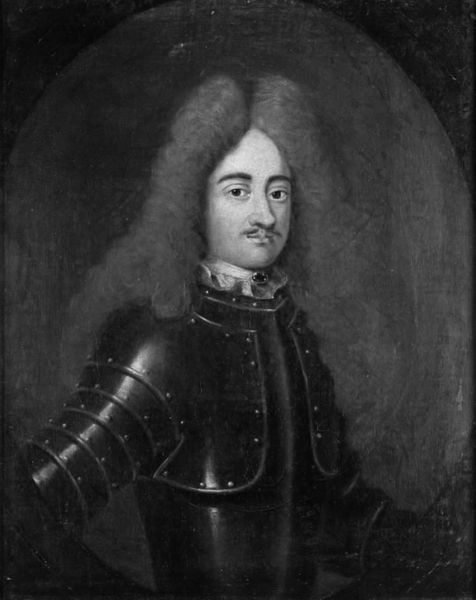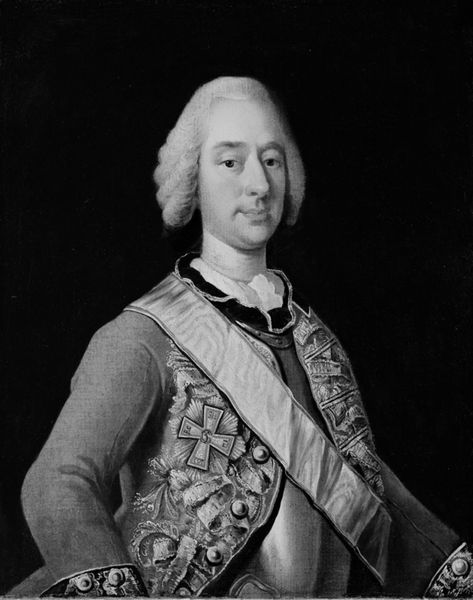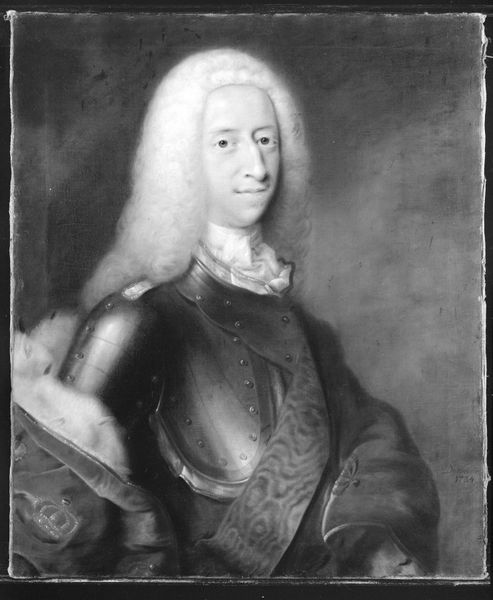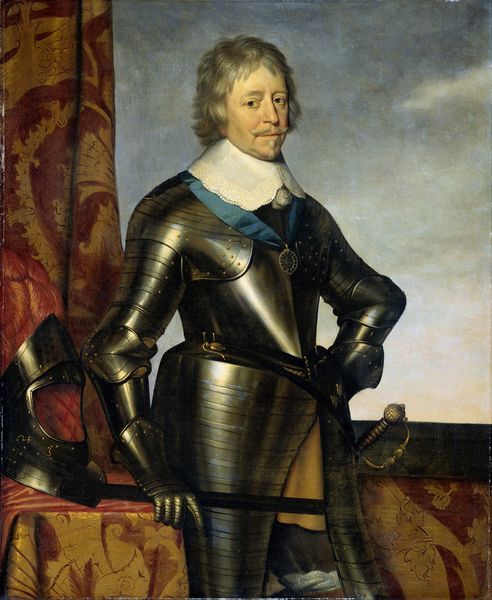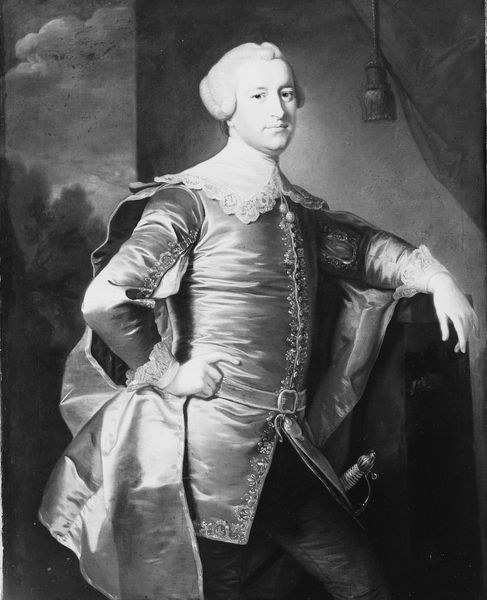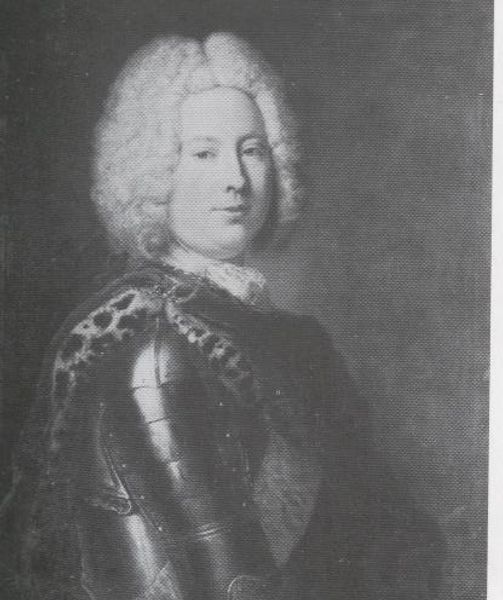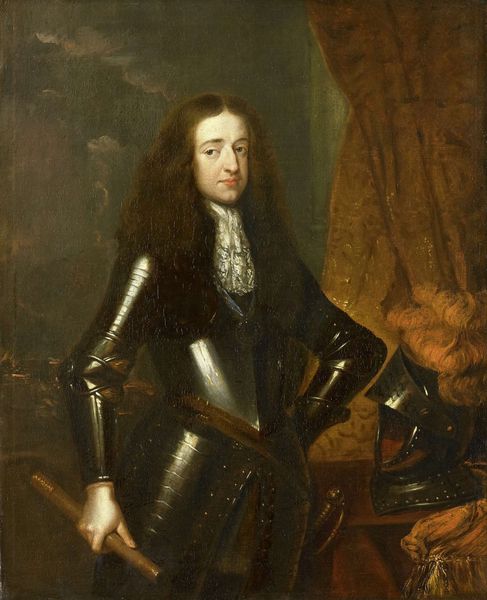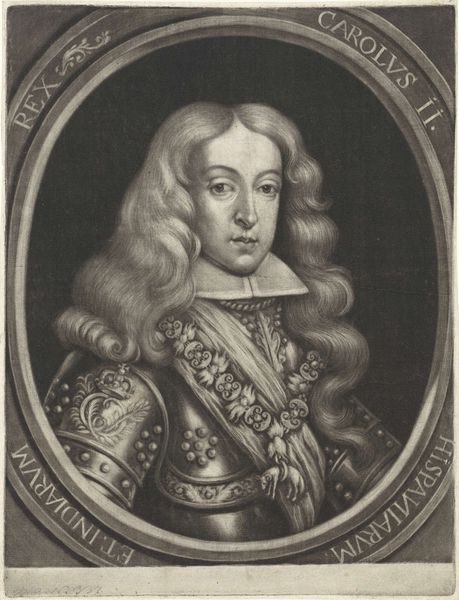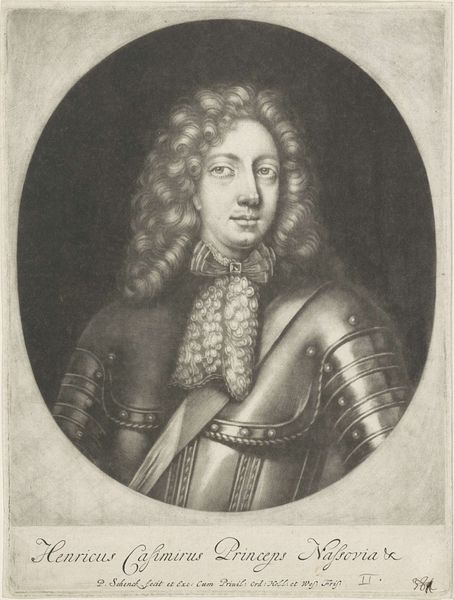
painting, oil-paint
#
baroque
#
portrait
#
painting
#
oil-paint
#
classicism
#
academic-art
Dimensions: 83.3 cm (height) x 63 cm (width) (Netto)
Curator: Allow me to introduce "Portrait of Count Jørgen Scheel," painted in 1737 by Louis de Silvestre the Younger. It's an oil painting currently residing at the SMK, Statens Museum for Kunst. Editor: My initial reaction is one of austere power. The contrast between the rigid armor and the soft, almost powdered face is quite striking. It sets a compelling tension right away. Curator: Precisely. Consider how the armor functions. Silvestre wasn't just depicting a man; he was crafting an image that resonated with specific social ideals and conveyed the subject's elevated rank within the Danish court. Editor: It's a fascinating blend of baroque dynamism and emerging classical restraint. The relatively muted palette compared to typical Baroque paintings really stands out to me. There's an almost photographic sharpness to the armor and detail in the face, which is rather interesting. Curator: Yes, that's a pivotal shift. The classicism is about conveying nobility in the language of permanence and stoicism. The textures –the sheen of the armor against the drapery–work together to symbolize established social hierarchies. Editor: But how much of that stoicism reflects reality? It seems every portrait is meant to perform a narrative for posterity, in his case, Count Jørgen Scheel is clearly signaling military prowess despite the fact he was quite young when it was painted. It speaks volumes about the role portraiture played in cementing a family's legacy. Curator: Indeed. The painting also gives insight to art's function as a tool for power at the time, solidifying noble lineages through controlled visual statements that supported political status. Notice the lighting across the work; even that could symbolize the power within his life and family. Editor: That's where the true richness of art resides. The material qualities are integral, but we must question who is represented, and how societal factors can affect art. A picture is worth a thousand words but a painting could dictate a legacy. Curator: Agreed. And by studying those thousand words, and their arrangement, we come closer to understanding both the artistry and the historical moment it sprang from. Editor: Ultimately, "Portrait of Count Jørgen Scheel" really brings up fascinating contradictions in representation and lived experience of power and class. It makes you reflect on where these artistic standards came from.
Comments
No comments
Be the first to comment and join the conversation on the ultimate creative platform.
